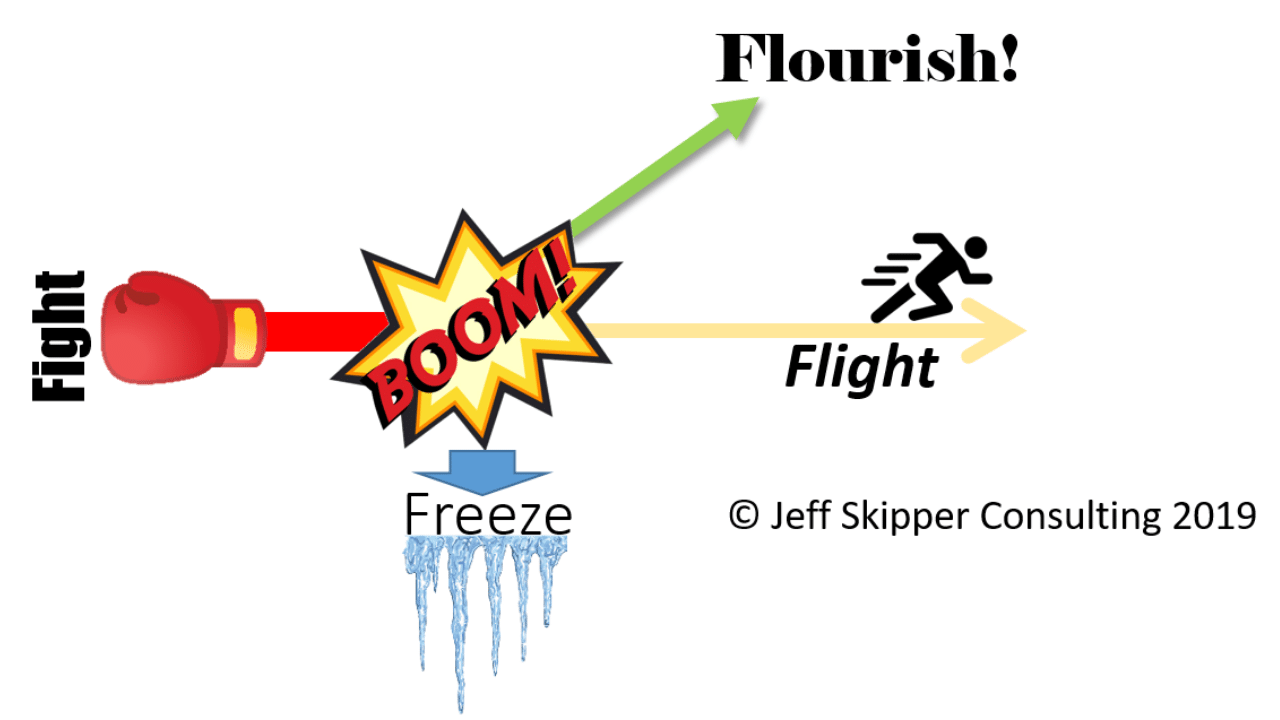While in Switzerland I willingly allowed another person to walk me off a cliff. My first paragliding experience was an intoxicating battle between fear and exhilaration while watching the ground fly past over 2000 feet below.
Brain science teaches us that we are tuned to notice changes in our environment, and when we detect potential threat, to respond with either fight or flight. Some become immobilized in the face of a threat, giving us a third and even more depressing option: freeze.
A prominent technology CEO in Toronto was recently quoted in a headline saying, “Most people don’t like change.” Indeed, if you listen to the news, we have a lot to fear as the pace of change continues to increase. The complexity and intensity of change is going up. And change is just plain hard. It’s a struggle.
Uh, no. Change is not hard. Not all the time. Consider…Before you sit down for lunch today, I bet you will have dealt with 50 circumstances which drive like these:
- Can’t find the pants you wanted to wear
- Siri cannot locate favorite black socks
- We’re out of milk
- Kids surprise you with a field trip form that has to be completed today!
- It’s standing room only on the train
- Construction closed a lane on the way to work: Detour!
- Computer updates demand a restart before you begin
- You forgot your favorite pen/notebook/phone at home
- Meeting dropped into your calendar at the last minute
- Your boss has asked for a report a week earlier than planned
You get the idea. The fact is that we deal with change all the time without skipping a beat. A ton of it. Without even thinking! My point is this: We are uniquely well suited to adapt to change.
Our brains are indeed tuned to pick up changes in the environment. We have a fantastic ability to follow the shiny object, the bouncing ball, and the flying squirrel. That’s our built-in change detector calling our attention to things that ‘don’t seem right’ in our environment so we can respond appropriately. When “one of these things is not like the other”, it’s time to pay attention. And so we do.
It’s at this point that the typical primer in change management notes our two options: fight and flight. It’s far too simple.
Paying attention to changes and threats is not just so we can run away or go to war, but also to adapt. Fight, flight and fear are logical outcomes to a potential threat, but so is flourish. We take advantage of opportunities. We master something new. The flourish option is not reserved only for early adopters. It’s for everyone who takes a positive approach to challenges that come their way. Which is everybody most of the time. We just get hung up on the few changes that are more complex. But with help, it’s still possible to flourish in the face of difficult change.
Our response to change is 100% a mental game, which means we can change it. While our instinct may be to run away, with a bit of mental training we can short circuit that reaction and divert energy from flight to flourish. How?
First, as change professionals, our initial responsibility is to educate our stakeholders. Not just about the practicalities of the change, but what they can think about it. Anticipate objections before they arise. For example, you could say:
“You may be thinking to yourself that there’s no way that you can learn such a complex set of skills. Well, let me tell you, I certainly thought it would be difficult, too, but then I took the training, went through the coaching, and found that I could do it after a few attempts.”
Provide personal examples of triumphs. Don’t be afraid to invoke emotion.
Second, back it up with practical support. What will you provide to ensure their success? Training is obvious, but what about coaching? Not just for employees, but also leaders: They are critical to creating an environment where failure is OK during transition. What they say and how they react speak volumes about how safe it is to try something new. Better yet, put your leaders at the front of the class as equal learners in the process of change.
Third, remind them of successes. What have they learned in the past? What changes have they made happen? How has each person demonstrated that they deal with change each and every day? How have they flourished?
Fourth, use the principle of self-efficacy. Albert Bandura clearly illustrated that teachers who lavished encouragement on their students observed significantly greater results in school. To the extent your leaders consistently articulate a sincere belief that their people will succeed during change, chances are much much greater that employees will try harder, persist longer, and eventually claim success.
Finally, paint a grand picture of life on the other side of the change. What will be the outcomes for employees, customers, community and the world when the transition is complete? Help them focus on how they will feel upon achieving mastery and the new normal settles in.
Every day people jump out of airplanes, take on new roles, get up on stage in front of a live audience, and take a stand knowing they are also taking a risk. Clearly Fight, Flight and Freeze are not the only options. Humans are incredibly flexible and adaptable. In the face of change, there are many who will flourish!







